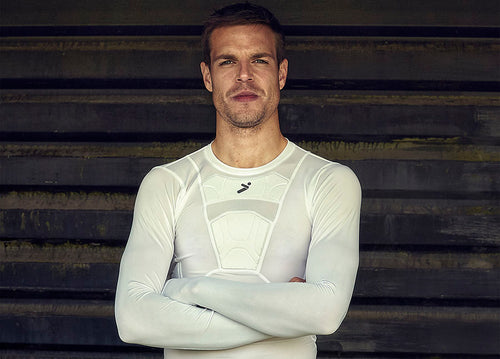Foot control and agility are everything in soccer. How you position your feet when you have the ball can enhance or diminish your passing ability. Learning to use different parts of your foot to pass, dribble and shoot the ball in different situations is crucial for becoming a versatile player.
Using different angles of your feet is equivalent to switching gears in a car. Different foot positions allow you to alter the movement of the ball and the amount of power and accuracy behind the pass.
Inside of the Foot
Passing with the ball with “inside of the foot” (“push pass”) is the most foundational pass in soccer. The youngest players learn this pass first for a few reasons.
- It’s the easiest one to learn.
- It’s the most suitable for short-distance passes.
- It requires little leg strength.
More importantly, though, this pass allows for the most control. The inside of the foot naturally fits the shape of the ball. This pass is the foundation for the “instep drive” kick, allowing players to pass the ball further. As simple as it is, most passes involve this kick, even at the professional level.
Outside of the Foot
Using the outside of the foot involves what its name implies. That’s kicking the ball with the outside portion of the shoe. Players do this by lowering the little toe, rotating their foot at the ankle, and then turning the foot inside.
The outside of the foot kick usually serves short-range passes on the ground. It’s a short pass that typically improves accuracy and produces no spin.
It’s also the foundation for shooting and passing bending balls through the air too. For the attack, kicking outside the foot confuses the defender, allowing the attacker to drive forward.
The caveat of this pass is that young and inexperienced players have difficulty understanding and executing it. They usually swing their lower leg incorrectly. Of course, plenty of repetitions and guidance from a coach can help them improve their technique.
Sole of the Foot
As players develop their foot control, using the sole of the foot becomes another option in their gearbox. It becomes a powerful gear to shift into. Using the sole of the foot allows players to trap, receive, roll and pass the ball.
The sole is the large area of the foot, making it easy to control the ball without losing contact with it. Kicking with the sole allows players to change directions effortlessly, moving forwards, backward, and sideways. That makes it easier for players to weave in and out of tight spots.
Some of the greatest soccer players in the world use their foot soles to pull off impossible passes, fakes, spins, rolls, and more. Of course, for younger players, kicking with the sole of the foot takes lots of practice to learn, much less master. But their game elevates to elite levels when they get good at it.
Reminders About Soccer Injuries & Soccer Protective Gear
Any move in soccer can lead to injury for various reasons. Overexertion, poor conditioning, and avoiding pre-game warmup can make basic maneuvers strenuous. Preventing soccer injuries while shooting, passing, or running boils down to a couple of things: regular conditioning and wearing soccer protective gear.
A combination of dynamic stretches and neuromuscular drills builds leg strength and muscle coordination. They keep the nervous system “ready” so the muscles and joints can withstand sudden cutting moves.
Traction is another critical and overlooked aspect of foot movements in soccer. A lack of traction makes slips and slides more likely, which means poor ball control and injury risk. Conditioning improves foot stability and balance, but some soccer protective gear can help too.
For example, our SpeedGrip insoles can improve traction. They lock your feet in position, so you have more control of your steps. That helps you maintain your power and speed for better passes. More importantly, these insoles keep your feet stable, so there’s less risk of injury.
Shift Into Elite Performance With Better Foot Control
Young and older players will elevate their game (and passing ability) if they improve their foot control. The ability to pass effectively may not look as flashy as fakes and shooting. However, the best teams are the ones that maintain ball possession throughout the game, and that requires superb passing. By teaching your players to use these foot maneuvers better, you’ll equip them with a skill that will make them dangerous on the pitch.























